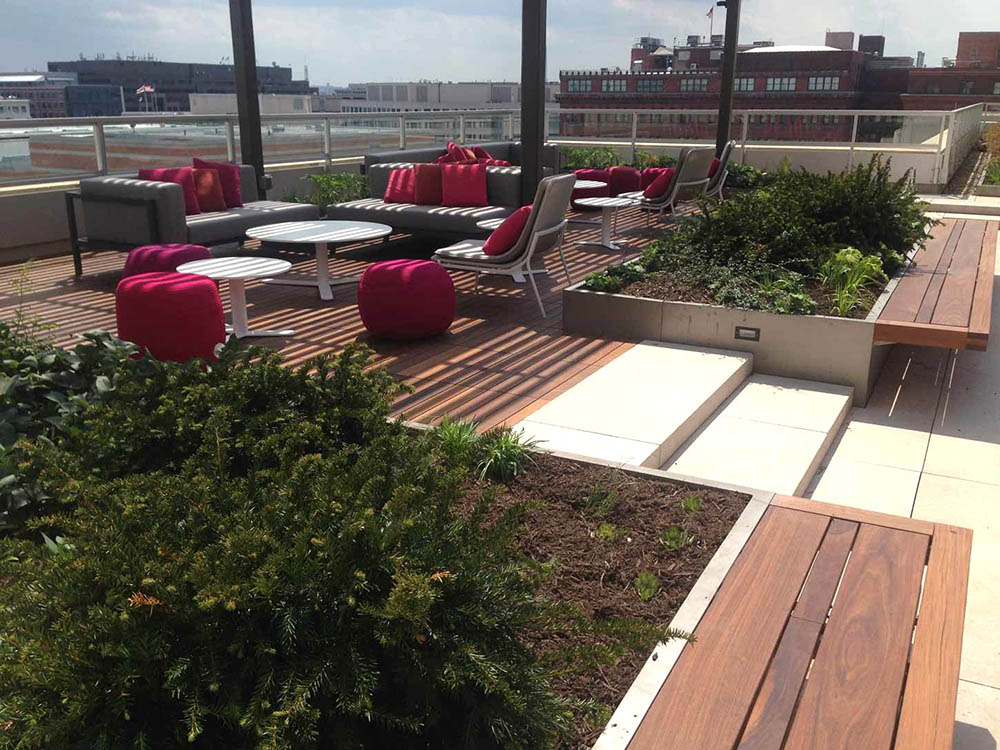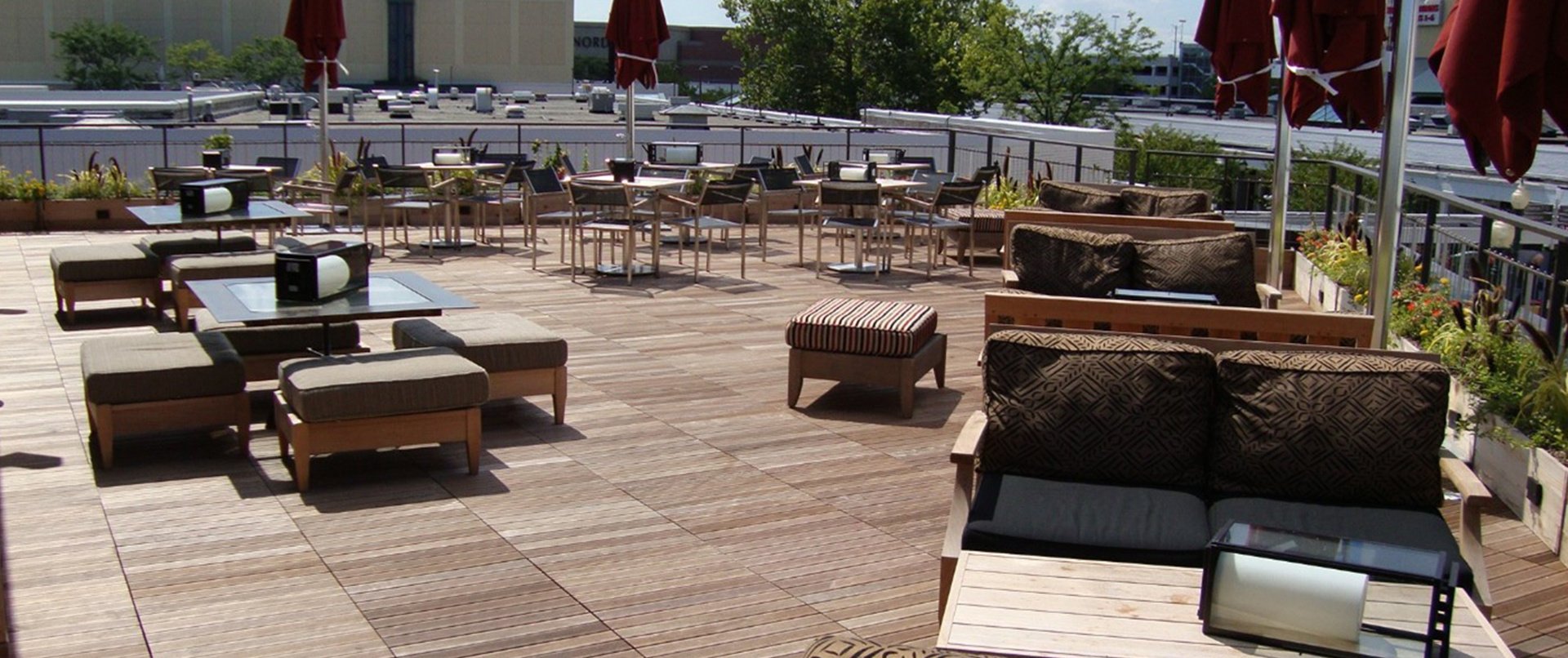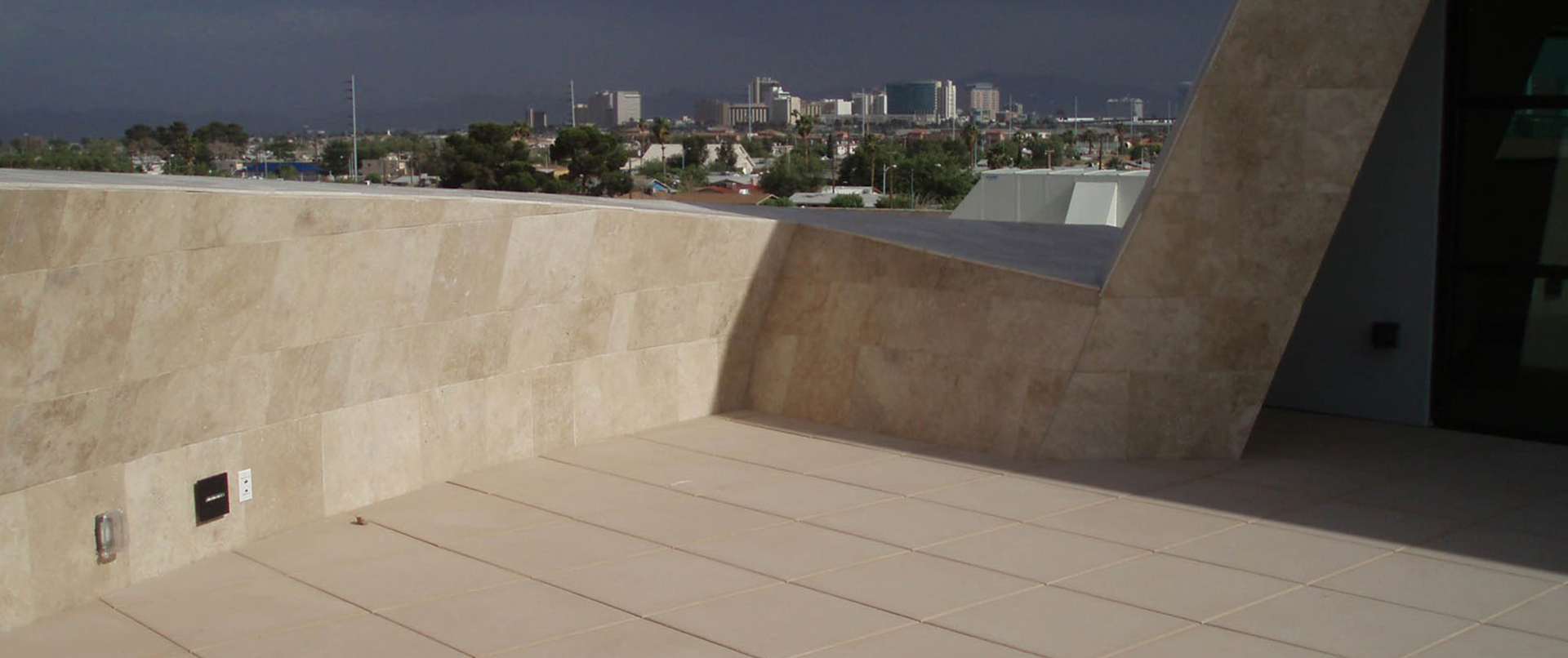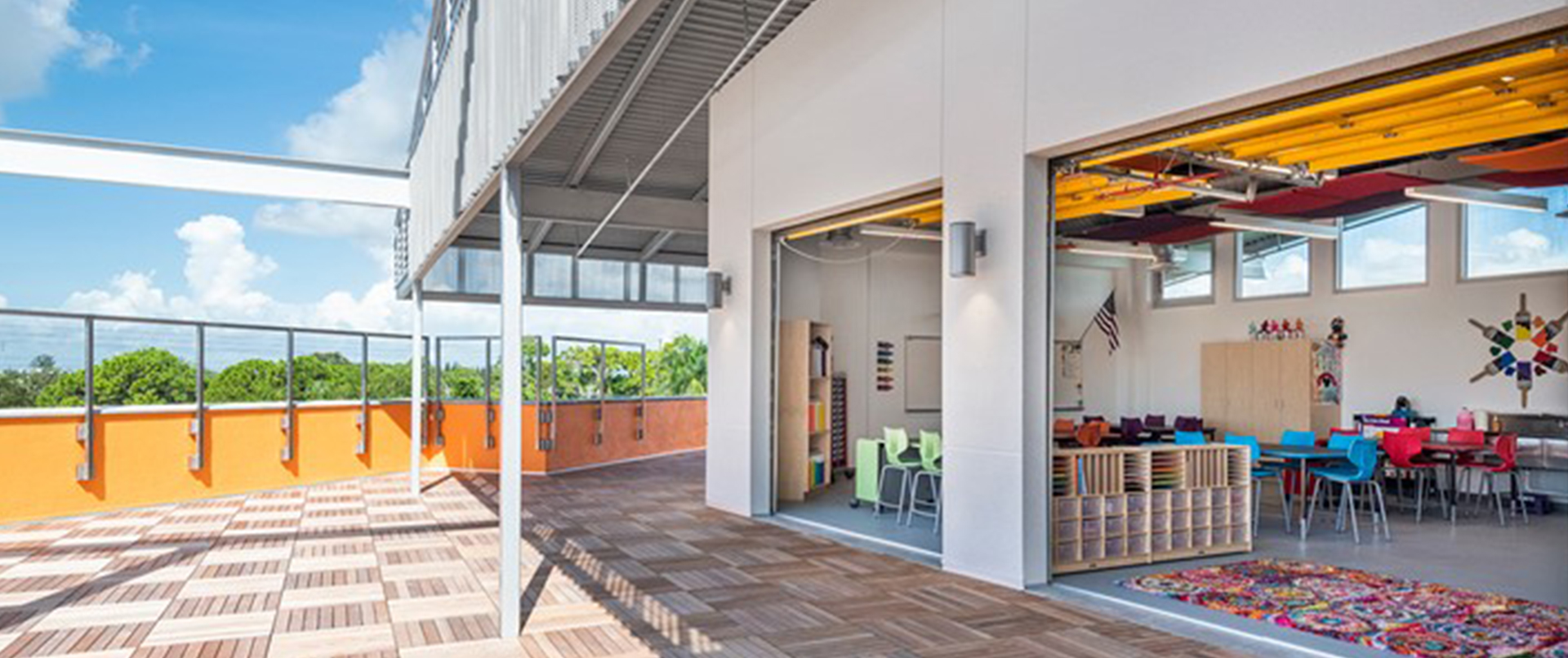Schools and universities are increasingly turning rooftops into classrooms and gathering spaces to make the most of limited campus real estate. These rooftop decks provide flexible, outdoor learning environments that enrich the academic experience. But because education depends on continuity (even after severe weather), resilience is especially critical. A rooftop deck failure doesn’t just threaten a building; it disrupts teaching, puts students at risk, and compromises the trust families place in an institution.
Rooftop spaces on academic buildings (from student lounges to outdoor classrooms) face exposure to wind, rain, extreme heat, and debris. The question is: how can these spaces remain safe and functional through severe weather? The answer lies in resilient design that help rooftop decks survive storms. This is why Bison Innovative Products places structural integrity, testing, and engineered performance at the core of rooftop deck design.
Why Storm Preparedness Matters for Rooftop Decks
- Escalating climate risks. Heavy rainfall and high winds are no longer rare events. Rooftops must be engineered to resist wind uplift, manage water loads, and limit damage.
- Full exposure to storm forces. Rooftop decks endure strong pressures, direct precipitation, and the weight of standing water or debris.
- Risk to assets and users. Failure in a rooftop deck can compromise the waterproofing below, damage structural elements, and pose safety hazards to occupants.
- Long-term usability. A resilient rooftop deck safeguards the investment over the years, reducing repair, liability, and downtime
In educational settings, where rooftops may double as gathering spaces or alternative classrooms, resilience is critical to maintaining continuity and safety. Explore our solutions that include paver trays and paver backers
Bison’s Approach to Resilient Rooftop Deck Design
Robust load capacity
Versadjust pedestals have been tested for uniform loads up to 1,250 lbs per pedestal, with a factor of safety of 3. This tested capacity offers a buffer beyond typical loads to support furniture, planters, and dynamic use.
Testing and validation
Bison rooftop systems undergo internal and third-party testing for slip, fire, thermal, and wind uplift resistance. Wind uplift resistance and seismic systems are available; designers should request details for project‑specific applications.
Integrated, modular surfacing
Deck zones combining pavers, tile, or turf are possible without decreasing storm performance. Because the system is modular, Because the system is modular, Bison’s innovative hidden fasteners allow individual panels or tiles to be removed for inspection or repair. This can be done without damaging the membrane or requiring full demolition.
Drainage and membrane protection
Elevated rooftop decks allow water to flow beneath the walking surface, protecting waterproofing membranes from direct sunlight and exposure to harsh environmental conditions. The open space beneath also allows regular inspection and access to roofing or mechanical systems.
Across these elements, Bison’s design philosophy is to provide a stable, resilient surface that performs under storm conditions while giving flexibility to architects and engineers.
Real‑World Application: Storm‑Ready Rooftop Deck Project
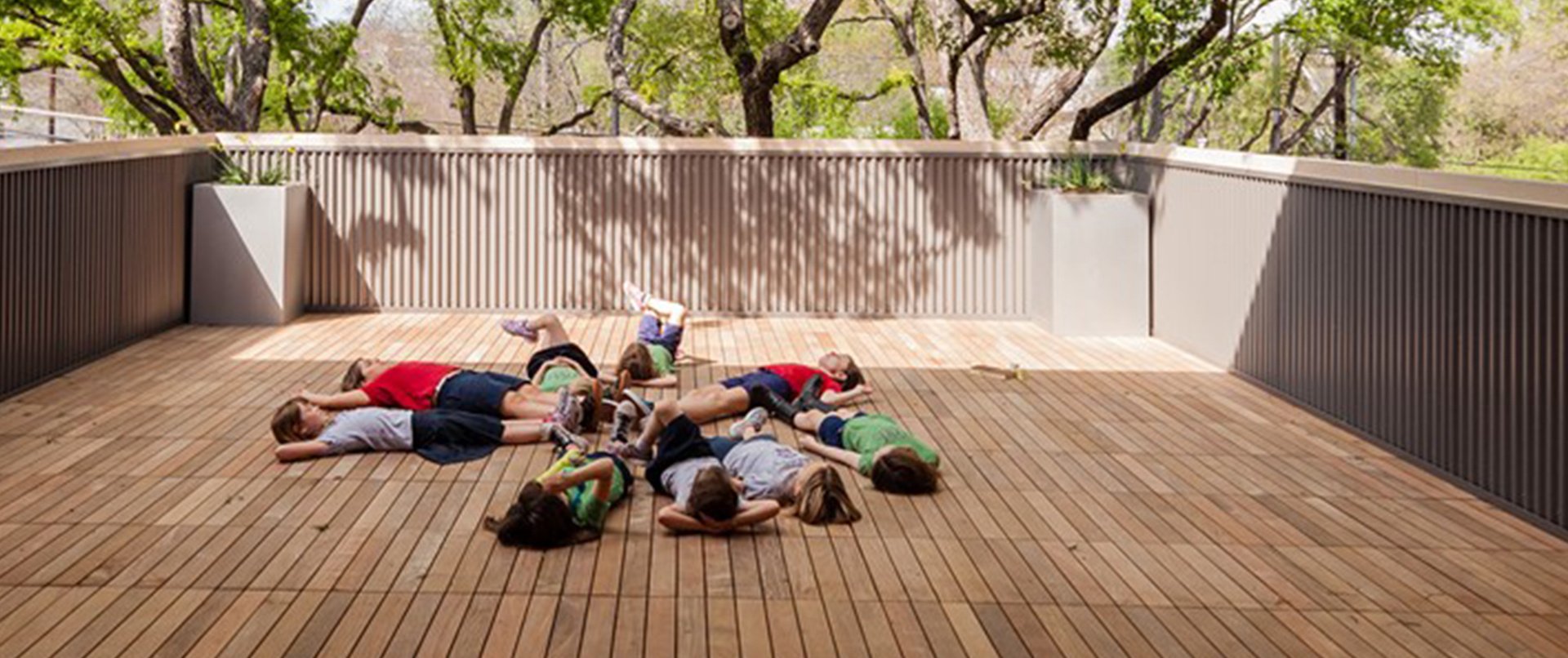
Girls’ School of Austin, Austin, TX (2014)
This campus renovation included rooftop deck elements using Bison’s modular system (with wood tiles over Versadjust supports). The deck functions as an outdoor learning environment, supporting classrooms, gathering spaces, and outdoor circulation.
Resilience strategies used:
- The elevated design supports drainage and protects the waterproofing membrane.
- Because the system is modular, panels can be removed for inspections or repairs after severe weather.
- The pedestal-supported system maintains high performance under typical Texas storm loads, ensuring outdoor learning spaces remain usable and safe.
In practice, over 60% of the new campus outdoor area is rooftop or decked space - demonstrating how resilient deck systems can become core functional areas even in challenging climates.
Building Rooftop Decks That Weather the Storm
Storm‑resilient rooftop design is crucial. With the increasing frequency of extreme weather events, rooftop decks must be engineered to perform. Bison’s modular system brings together structural performance and design flexibility that help roofs stay intact and usable under stress.
Contact Bison Innovative Products to explore how their rooftop deck solutions can improve resilience on your next project and provide confidence through storm seasons.
FAQ
Why choose rooftop decks for schools?
They create outdoor learning spaces using existing roofs. With storm-focused design - tested wind-uplift resistance, robust load ratings (Versadjust up to 1,250 lbs per pedestal with a 3x safety factor), and modular access for post-storm checks - schools can keep spaces functional and get back online quickly.
What makes a rooftop deck resistant to storm damage?
Key factors include tested wind uplift resistance, adequate structural load capacity, modular design that resists displacement, and protection of the waterproofing substrate.
Can rooftop decks be repaired or inspected after a storm?
Yes. Bison’s modular systems allow individual panels or tiles to be lifted for inspection, maintenance, or repair without major disruption to the overall rooftop deck. Find more information about our products here.
Disclaimer:
Bison Innovative Products recommends that all rooftop deck installations be reviewed by a licensed structural engineer. The roof must be able to safely carry both static and live loads including decking, furnishings, accumulated water, and any storm loads. All designs must comply with applicable building codes, and contractors should have a minimum of two years proven experience in rooftop deck systems. Project designers should consult Bison’s published specifications and testing documentation before construction.
.png?width=100&height=100&name=BisonIP-logo-PMS425-2023%20(1).png)

